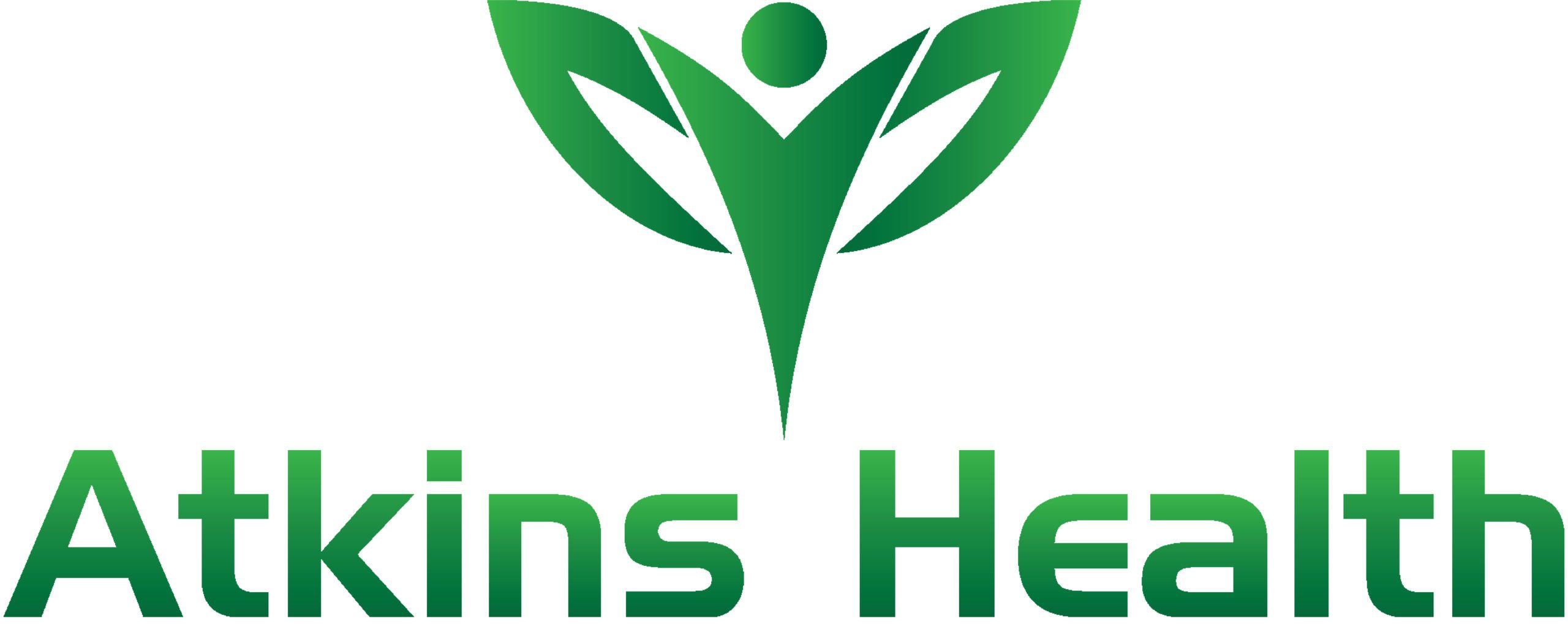How to Reduce Risk Factors of Osteoporosis
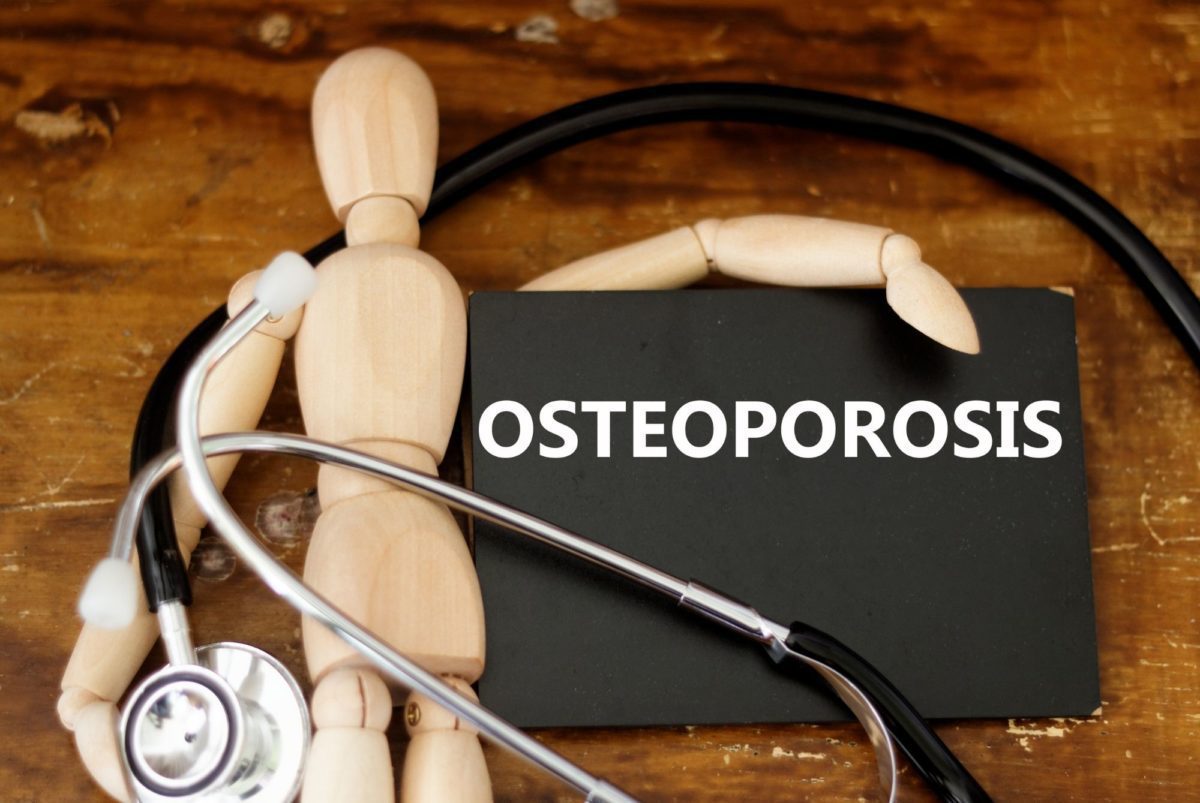
What is Osteoporosis?
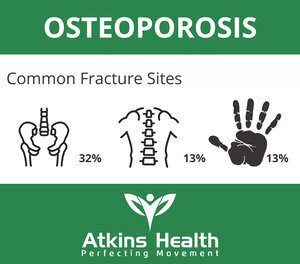 Osteoporosis is the reduction in bone mineral density to a point in which your chance of fracture is becoming high. Osteoporosis is a condition that affects the bones in people of any age, but it is more common in older adults, especially women. Osteoporosis is a “silent” disease because you typically do not have symptoms, and you may not even know you have the disease until you break a bone.
Osteoporosis is the reduction in bone mineral density to a point in which your chance of fracture is becoming high. Osteoporosis is a condition that affects the bones in people of any age, but it is more common in older adults, especially women. Osteoporosis is a “silent” disease because you typically do not have symptoms, and you may not even know you have the disease until you break a bone.
People with osteoporosis are at high risk of fracture, or bone breaks while doing routine activities such as walking or standing. The most affected bones are the ribs, hips, and the bones in the wrists and spine. A break affects not only the fracture site but the dependence and lifestyle of the patient is greatly compromised. At Atkins Health, we help clients with osteoporosis treatment.
What is Osteopenia?
Osteopenia is the beginning of weakening of the bones. It precedes osteoporosis. Your body increases bone mass as you age, until around the age of 35. Building strong bones, especially before the age of 35, can be the best defence against developing osteoporosis. A healthy lifestyle is also important for keeping bones strong to prevent osteoporosis.
How Common Is Osteoporosis/Osteopenia?
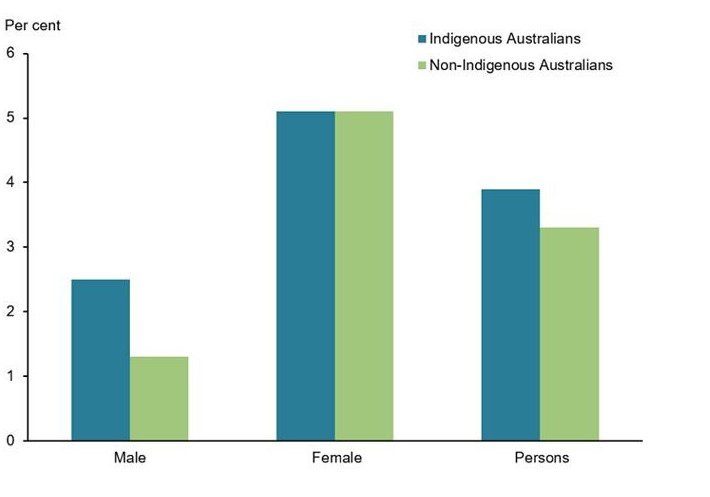
Generally, osteoporosis is under-diagnosed because it has no overt symptoms, and therefore is often not diagnosed until a fracture occurs. According to AIHW, osteoporosis is more common in women than men. In 2017–18, 29% of women aged 75 and over had osteoporosis compared with 10% of men. Older age groups also tend to be affected. The proportion of women with osteoporosis increases with age, with those 75 and over is most affected.
Risk Factors of Osteoporosis
Any treatment first involves understanding the risk factors of osteoporosis and creating a plan based on the requirements of each individual. Some common osteoporosis risk factors include:
Family History
Poor bone health can be hereditary, do you have anyone in your family, especially parents or siblings, who has been diagnosed with osteoporosis? You should also be mindful of anyone who has experienced a broken bone from a minor fall, as this can indicate being at risk of osteoporosis.
Low Calcium and Vitamin D Intake
According to Healthy Bones Australia, adults require 1,000 mg per day (preferably through diet) increasing to 1,300 mg per day for women over 50 and men over 70 years. Vitamin D is also needed to absorb calcium, and therefore people with Vitamin D deficiency should also check for any risks.
Medical Conditions Can Affect Bone Health
There are various medical conditions that can impact bone health including Coeliac disease, Diabetes, Rheumatoid arthritis, chronic liver or kidney disease, Anorexia nervosa, low hormone levels (early menopause), or breaking a bone from a fall, especially if you are 50 years of age or over.
Certain breast cancer treatments and certain epilepsy, anti-depressant, or HIV treatment can also be risk factors of osteoporosis.
Lifestyle Osteoporosis Risk Factors
Lifestyle choices like smoking, excessive alcohol intake, or low amounts of physical activity can also impact bone health. Your body build affects too, especially factors like obesity, where studies suggest that hormonal changes associated with obesity can impact bones.
Diagnosis
Osteoporosis affects men and women of all races and ethnic groups. Osteoporosis can occur at any age, although the risk for developing the disease increases as you get older. Osteopenia usually doesn’t have any symptoms. Diagnosis for osteoporosis and osteopenia is a simple process by undertaking a Bone Density Test through your GP lasts, a non-invasive and painless test of about 15 minutes in duration. All that is required is for you to lie still on your back (fully clothed) on the machine whilst the arm of the machine passes over your body. The usual sites of interest are the hips, spine, and neck.
There are other machines like the heel scan that are usually more readily available but should be considered more as a screen than an actual diagnosis.
The Bone Density Test will then give you a “T score” for each of the locations used to diagnose your bone mineral density.
A ‘T’ score of:
1 to -1 is normal
-1 to -2.5 is Osteopenia
-2.5 and on is Osteoporosis
To get a scan organised visit your G.P and ask.
Osteoporosis Treatment
Perspectives on treatment have greatly shifted in the last 5 years to a more proactive approach to the condition. Depending on the treatment undertaken, recent studies have shown a reduction in decline with age and even in some cases an improved bone density.
For Osteoporosis treatment, these factors are essential.
Medication
The medication currently available to us works on the balance between the osteoblast and osteoclast activity. With Osteoporosis coming into effect when osteoclast activity is more than osteoblast activity, medication looks to downregulate the osteoclast activity to even up the balance.
Benefits of Exercise for Osteoporosis
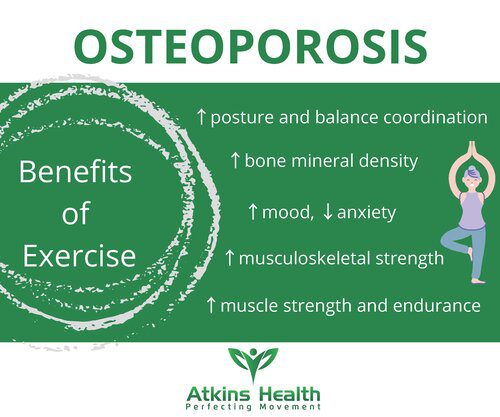
Exercise treatment has been shown in recent studies to have profound results and is designed to naturally encourage an increase in strength and density of the bones through natural stimulus.
Heavy weight bearing exercises for osteoporosis, in a safe supervised environment, encourages the body to up-regulate osteo-blast activity through natural mechanical and biochemical signalling. Simply put, our body is consistently adapting to the stimulus we give to it. Bodies want to become more efficient and effective at the directions and requirements we make of it.
Due to the nature of heavy lifting the recommendation is to see one of our accredited exercise physiologists, to ensure the right dose, intensity and technique is prescribed. Ultimately the aim is to get to heavy loading of exercises of 4-8 reps (enabling to you to go heavy and reduce fatigue) for 5 sets (allowing for adequate exposure to the stimulus) for any of the given exercises.
We also offer a class leading back pain treatment program which helps to provide relief from osteoporosis-related back pain.
Book a call with us to discuss your health with one of our practitioners or enquire about our specifically tailored Bone Society group classes by completing the form below.

